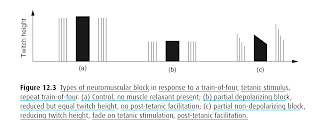Paediatric blood pressure
Lower limit of paediatric systolic blood pressure according to age: 0 - 1 month: > 60 mmHg 1 month - 1 yr: > 70 mmHg 1 yr - 10 yr: > 70 + (2 x age in yrs) > 10 yrs: > 90 mmHg
Anesthesia notes, Anesthesia pharmacology, Clinical Anesthesia , Physiology in Anesthesia, Comorbidity disease in Anesthesia, Anesthesia complications, Regional Anesthesia, Paediatric Anesthesia, Anesthesia machine, Physics in Anesthesia, Anesthetic considerations

